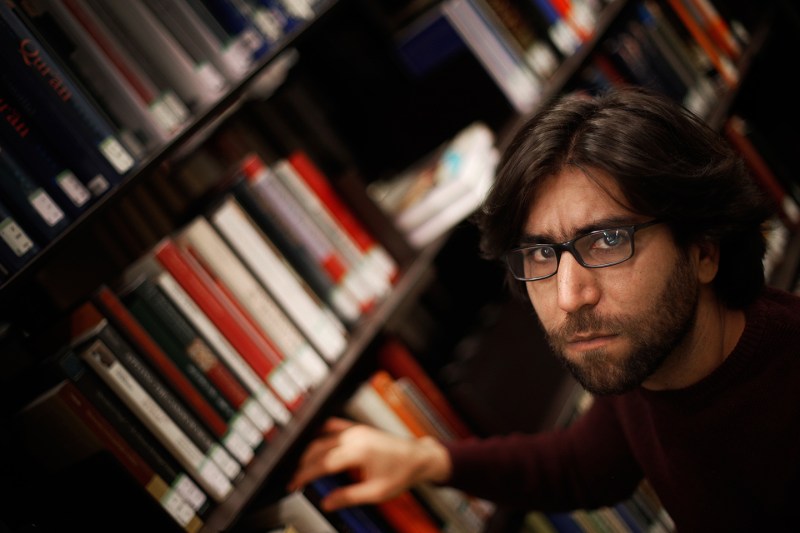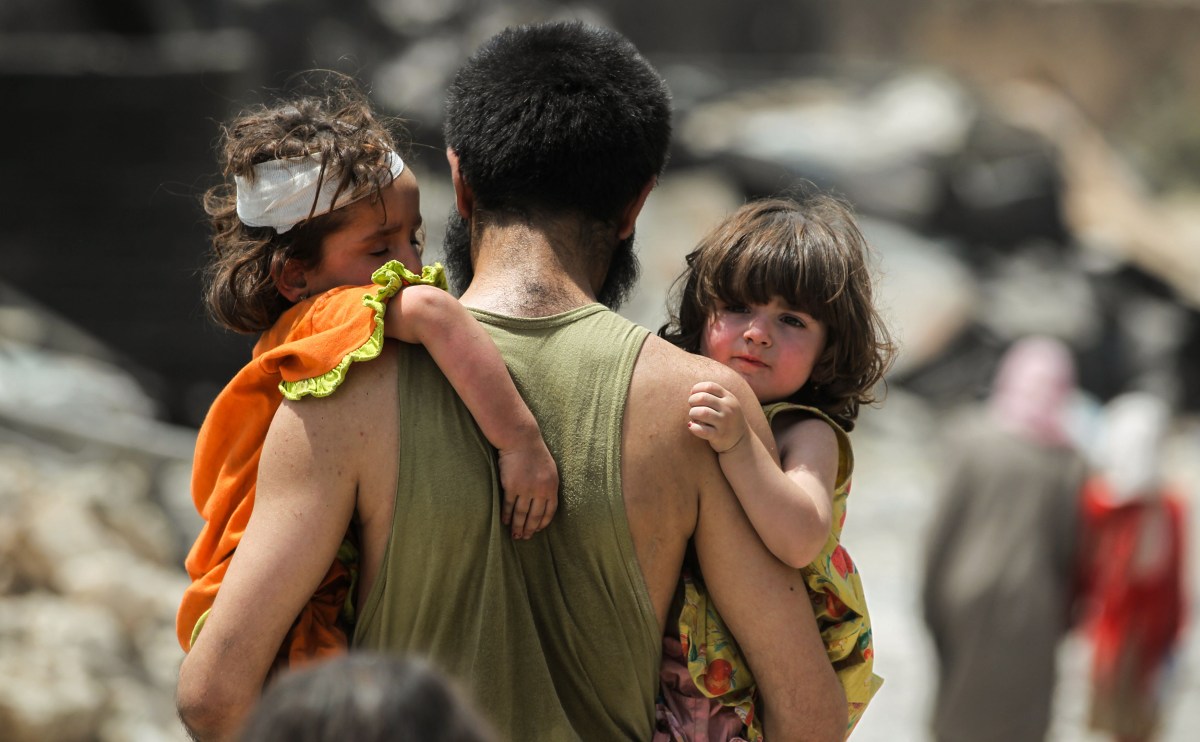For three years, Omar Mohammed was a different man every day. Sometimes he was a businessman, talking to people at the markets in Mosul. Other days he was a shopper, going into different stores. Occasionally he was a taxi driver. Over those years, almost no one knew that Mohammed, 31, was an undercover historian, documenting everything that was happening while the Islamic State group was occupying Mosul.
Mohammed is the man behind Mosul Eye, a widely read blog that documented the horrors of living life under Islamic State extremists. The consequences of Mohammed’s secret life were clear to him: if he was caught, he would be killed.
“I didn’t fear the death,” Mohammed told RealClearLife during a phone interview. “ISIS wanted to impose its narrative of history, of Mosul, the only thing we had was to write it, to stop ISIS from stealing the history of the city.”

Mosul was liberated from ISIS rule on July 10, 2017, after three years. During the nine-month battle that it took to free the city, between 9,000 and 11,000 people were killed. The civilian casualty rate was nearly 10 times higher than originally reported, according to an Associated Press investigation. Nearly every neighborhood of western Mosul has “blocks of blasted houses, industrial areas, government buildings and infrastructure.”
“The marks and scars of the occupation were still to be seen, as many of the buildings have been destroyed and there were dead bodies lying on the streets,” said Ammar Khamees to RealClearLife. Khamees is a former Iraqi soldier turned non-profit founder. He is currently the director of Critical Needs Support Foundation (CNSF). “Since the liberation and the declaration that ISIS has been removed from Iraq, there has been a drop in interest in Mosul from the international community.”
Mohammed echoes Khamees’s sentiment. He feels like since there are no more battles, no one is talking about “the aftermath or the consequences or what the city needs.” Local leaders in Baghdad believe they need at least $100 billion to rehabilitate Mosul. But so far, no one has offered to help foot the bill. With thousands dead, education systems destroyed, and homes lost, how does a city begin to heal?
ISIS Occupation
“When Mosul was under ISIS occupation, there were many human rights violations and limits to the freedom of those who chose to remain,” said Khamees. CNSF conducted emergency distributions of food, emergency rations and water bottles in Mosul under ISIS occupation. “It has been described as living in an open jail where the people were forced to live under radical Islamic law. It was because of the physical dangers and lack of freedom of living under ISIS rule that more than half of the city’s population became internally displaced persons.”
When ISIS first arrived in Mosul in 2014, everything in the city changed for the roughly 600,000 residents held in the city. Electricity and water deteriorated significantly, and residents lived in darkness. The Guardian reported that before ISIS came, Mosul had about 20 hours a day of electricity from the national grid. But within four months under ISIS rule, it dropped to six-eight hours, and then it fell to two hours a day.
ISIS took over the airwaves and erected big-screen TVs in public squares to publicize their rules. The militants did not allow girls to attend school anymore, and young boys were taught Islamic State-altered curriculum that reflected ISIS’s brutal ideology. Khamees, who was born in Baghdad and joined the Iraqi police when he was 19 years old, said that “hospitals and clinics could not access medicine, and so people who had chronic long term illnesses and those who were injured were at risk.”
Any sort of mobile phones were banned and listening to music and or smoking cigarettes were punishable acts. Children died of hunger, and people were whipped, beheaded and stoned
Mohammed documented all of this on Mosul Eye. He saw the blog as an “act of resistance.” Every night, he remembered what he witnessed — including public beheadings or death by stonings — so that he could “protect the future of the city,” where his family had lived for decades. In his mind, no one would dare say that people in Mosul lived peacefully under Islamic State rule, or that the people of Mosul did not fight back.
One of the most important aspects of Mosul Eye was that it was written in English, not Arabic. Mohammed told RealClearLife that documenting the history and protecting the history from ISIS wasn’t enough. He had to make sure to transfer the history globally because then, ISIS could never erase it. Mosul history was not just for those in Mosul; it needed to be spread across the world. In order to reconstruct Mosul, the history that ISIS tried to stamp out needs to be remembered.
Life After Liberation
The Trump administration has told the Iraqis that it will not pay for the reconstruction, according to the Associated Press. The UN is repairing infrastructure in certain towns and cities around Iraq, but only has funding for a fraction of what is needed. Much of the rebuilding that is happening is on a personal level — Iraqis are using their own savings to salvage homes and businesses the best they can. In Mosul alone, the UN estimates that 40,000 homes need to be rebuilt or restored and some 600,000 residents have been unable to return to Mosul, which was once home to around two million people.
“I know this will not happen, but let me say it,” Mohammed told RealClearLife. “We need Mosul to be under international supervision or protection for at least 5 years and the city should be rebuilt with international efforts, because we are still suffering from the same problems that happened prior to 2014, it’s still the same corruption, the government has no clear plans to deal with this aftermath, lots of schools have been destroyed, the education system has been damaged.”
In Mohammed’s mind, in order to fully heal the scars of war, Mosul needs therapy programs, special programs for children, a new education system, and help from international programs. He believes that without international support, ISIS could rise again in Mosul and find ways to recruit people, by telling the youth that their government doesn’t support them and isn’t interested in rebuilding their city.
The youth need the most help, Mohammed thinks. Because many of them were “brainwashed” by the Islamic State’s curriculum, Mohammed thinks youth need cultural centers as well as places they can go to finish their education.
“Before we rebuild the city, we need to rebuild the education, and after we rebuild the education we need to rebuild the society of Mosul,” he said.
Khamees, now 29, also told RealClearLife that Mosul needs “huge funds for the city to recover and a high degree of commitment from funding bodies to continue fixing their attention on the city and to prioritise it.”
“We need people who are highly educated, experienced and not corrupt to take the leadership and ensure that money for the city’s reconstruction is going to the most needy and vulnerable areas,” he said.
Though neither man speaks for all citizens of Mosul, both Mohammed and Khamees told RealClearLife that the city needs trained professionals to come in and work with the citizens.
“The best way to receive this support would be through the capacity building of trained professionals within the country and to build a network of psychosocial support among peers,” Khamees said in an email interview. “To funnel resources into this area and to build from within would be the best technique for recovery.”
This article appeared in an InsideHook newsletter. Sign up for free to get more on travel, wellness, style, drinking, and culture.
























